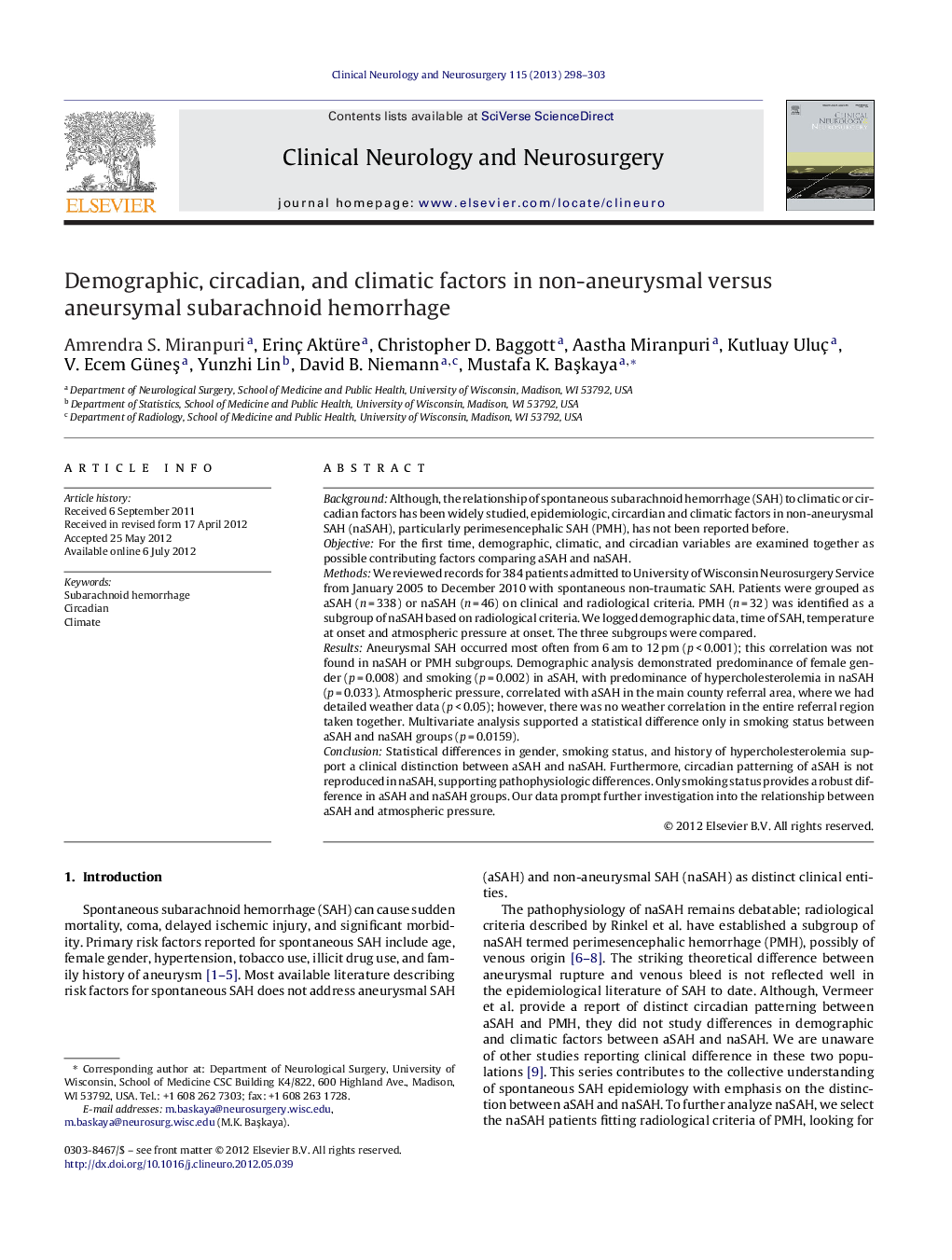| Article ID | Journal | Published Year | Pages | File Type |
|---|---|---|---|---|
| 3040959 | Clinical Neurology and Neurosurgery | 2013 | 6 Pages |
BackgroundAlthough, the relationship of spontaneous subarachnoid hemorrhage (SAH) to climatic or circadian factors has been widely studied, epidemiologic, circardian and climatic factors in non-aneurysmal SAH (naSAH), particularly perimesencephalic SAH (PMH), has not been reported before.ObjectiveFor the first time, demographic, climatic, and circadian variables are examined together as possible contributing factors comparing aSAH and naSAH.MethodsWe reviewed records for 384 patients admitted to University of Wisconsin Neurosurgery Service from January 2005 to December 2010 with spontaneous non-traumatic SAH. Patients were grouped as aSAH (n = 338) or naSAH (n = 46) on clinical and radiological criteria. PMH (n = 32) was identified as a subgroup of naSAH based on radiological criteria. We logged demographic data, time of SAH, temperature at onset and atmospheric pressure at onset. The three subgroups were compared.ResultsAneurysmal SAH occurred most often from 6 am to 12 pm (p < 0.001); this correlation was not found in naSAH or PMH subgroups. Demographic analysis demonstrated predominance of female gender (p = 0.008) and smoking (p = 0.002) in aSAH, with predominance of hypercholesterolemia in naSAH (p = 0.033). Atmospheric pressure, correlated with aSAH in the main county referral area, where we had detailed weather data (p < 0.05); however, there was no weather correlation in the entire referral region taken together. Multivariate analysis supported a statistical difference only in smoking status between aSAH and naSAH groups (p = 0.0159).ConclusionStatistical differences in gender, smoking status, and history of hypercholesterolemia support a clinical distinction between aSAH and naSAH. Furthermore, circadian patterning of aSAH is not reproduced in naSAH, supporting pathophysiologic differences. Only smoking status provides a robust difference in aSAH and naSAH groups. Our data prompt further investigation into the relationship between aSAH and atmospheric pressure.
